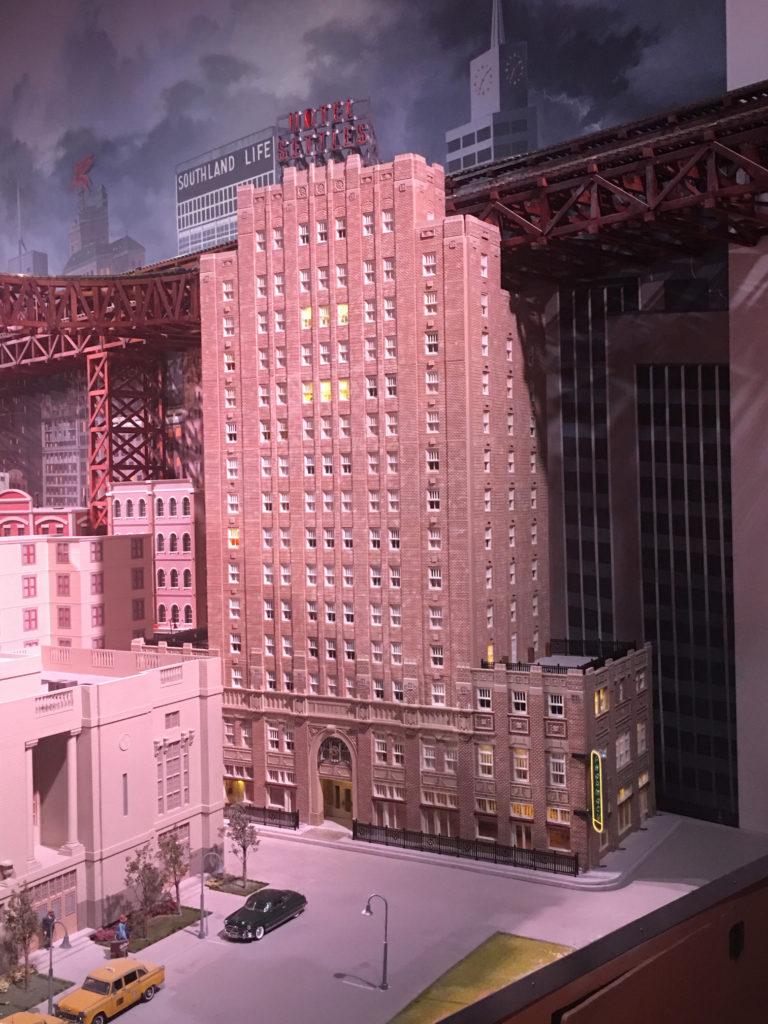All about the community of model railroading and rail enthusiasm
December 23, 2019 / Updated June 26, 2023
FRISCO, TX — The Museum of the American Railroad (MAR) had a showing in December of a 1:32 scale model of the historic Hotel Settles in Big Spring, TX, that was built for TrainTopia, the museum’s massive G-scale layout at the Frisco Discovery Center.
The model, produced by B&T Model Railroad Design, rises to six feet above the busy streetscape of TrainTopia and was delivered in November after 10 months of research and construction. It will be a permanent part of the 2,500-square-foot operating model train exhibit.
The hotel opened Oct. 1, 1930, and was built by Will R. and Lillian Settles. At 15 stories and 150 rooms, it was the tallest structure between El Paso and Dallas and featured a restaurant and pharmacy.
Among its guests were Elvis Presley, Lawrence Welk and President Herbert Hoover, as well as Big Spring native Jerry Allison, who drummed for Buddy Holly and the Crickets.
The hotel closed in 1982. Following years of decay and decline, Brint Ryan, who grew up in Big Spring, and his wife, Amanda, began fully restoring the hotel’s 19th-century Art Deco grandeur. The Ryans were major benefactors, along with the Sanders family in Dallas, for TrainTopia.
The model was constructed using SLS 3D printing, mold and resin casting, CNC machining and old-fashioned craftsmanship.
In February 2019, MAR commissioned the development and construction of the model. B&T’s Bob Nunn, Tom Pantuso and Jeremy Pantuso began a long journey scaling down the iconic hotel, using the original architecture plans and on-site surveys as a guide.
Detailed designs and fabrication of the substrate, walls and façade were accomplished using high-density foam or Precision Board from Coastal Enterprises. A CNC machine from BOBSCNC accurately cut the nearly 500-plus pieces required to duplicate the incredibly detailed Art Deco, brick walls and ornamental features.
Tom Pantuso incorporated mold making and resin casting to create the more than 300 windows and doors that encompass the hotel. Fort Worth artist Angie Glover painted the entire model by hand, bringing to life each individual brick, hundreds of Art Deco panels and blocks.
LED lighting, combined with relays and independent power supplies, bring life to the interior and exterior windows, floodlights, ceiling lamps and wall sconces. The model’s lighting system works both independently and in conjunction with the exhibit’s own state-of-the-art lighting.
